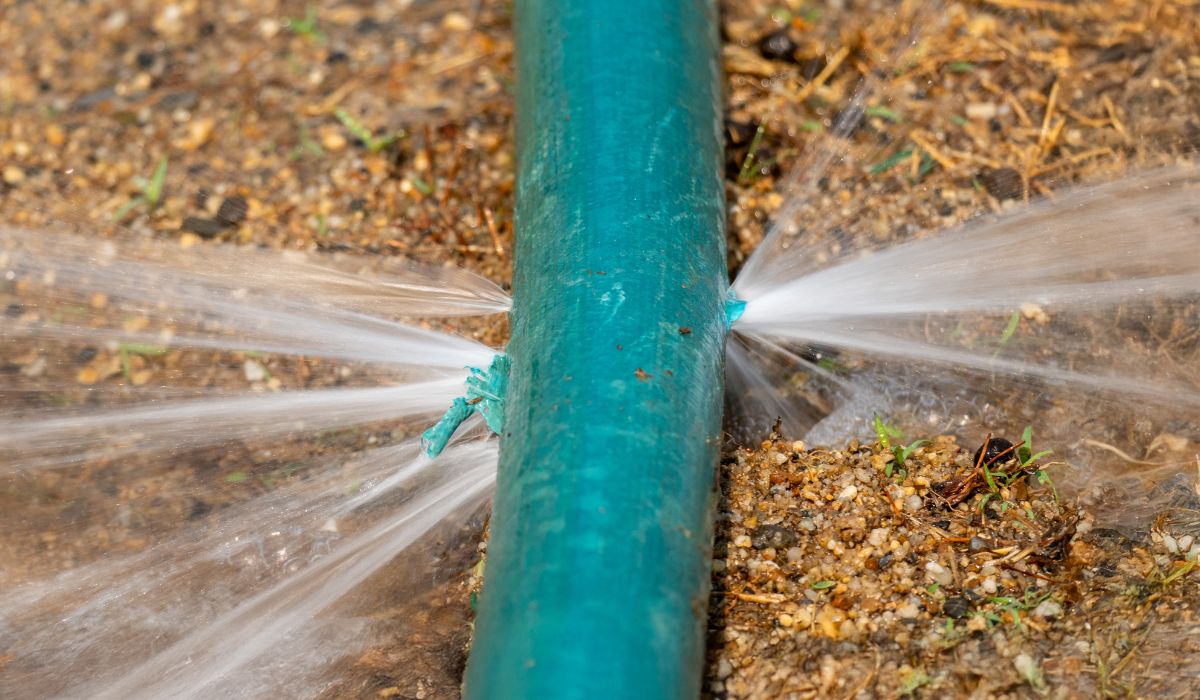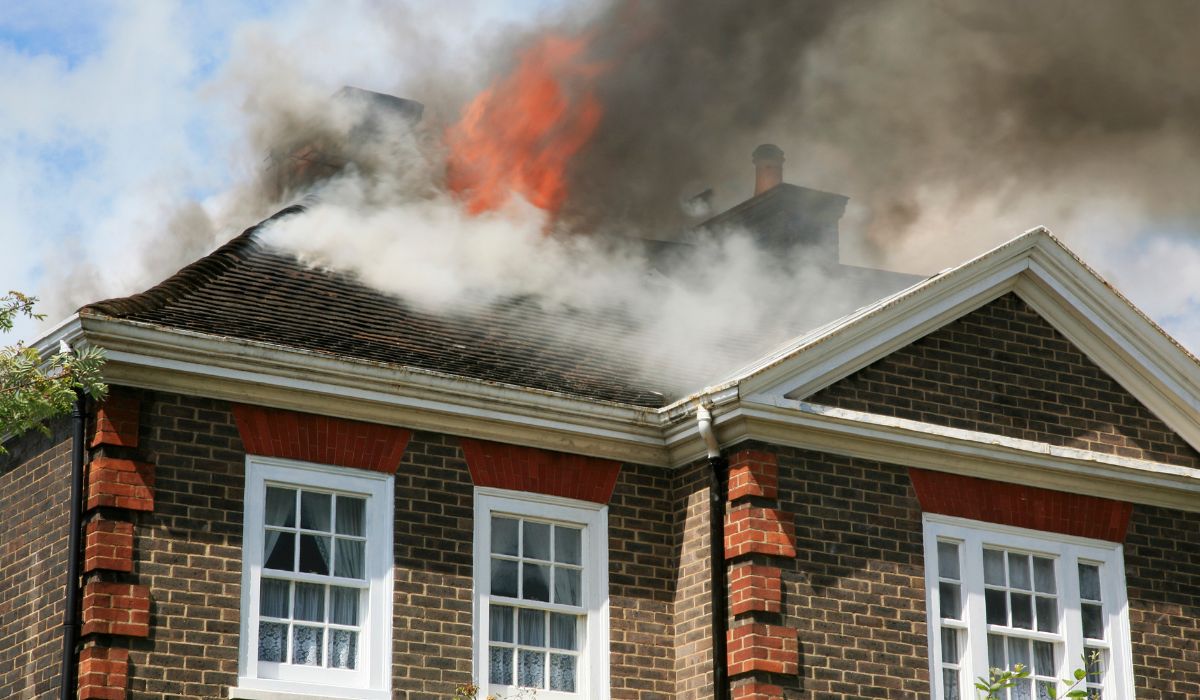Navigating Permits for Restoration Projects in Orange County

Local Laws and Permits for Restoration Work in Orange County
Restoration work in Orange County, particularly involving water and mold damage, requires a thorough understanding of local laws and permit regulations. Homeowners and contractors must navigate a myriad of guidelines ranging from the California Green Building Standards Code to occupational safety and health regulations. When addressing water extraction, dehumidifier use, and mold remediation, it becomes essential to comply with strict building codes and environmental standards. Local laws not only ensure that any restoration, repair, or renovation is performed safely but also help avoid potential liabilities that can arise from non-compliant work. In addition, understanding the permit process can save time and money by preventing project delays related to inspections or enforcement actions by local authorities such as the International Code Council and the National Fire Protection Association. This article offers a comprehensive guide on the regulations governing restoration work in Orange County, focusing on building codes, permit acquisition, water damage and environmental regulations, as well as inspection and enforcement protocols. By shedding light on key provisions, amendments, documentation requirements, and enforcement consequences, this guide prepares homeowners and contractors to handle restoration projects professionally. The discussion also covers special considerations including historic preservation and accessory dwelling unit (ADU) restoration. With detailed explanations, peer-reviewed research references, and practical examples, the reader will gain a strong foundation for ensuring compliance and maintaining safety during restoration work in Orange County.
Understanding Orange County Building Codes for Restoration Projects
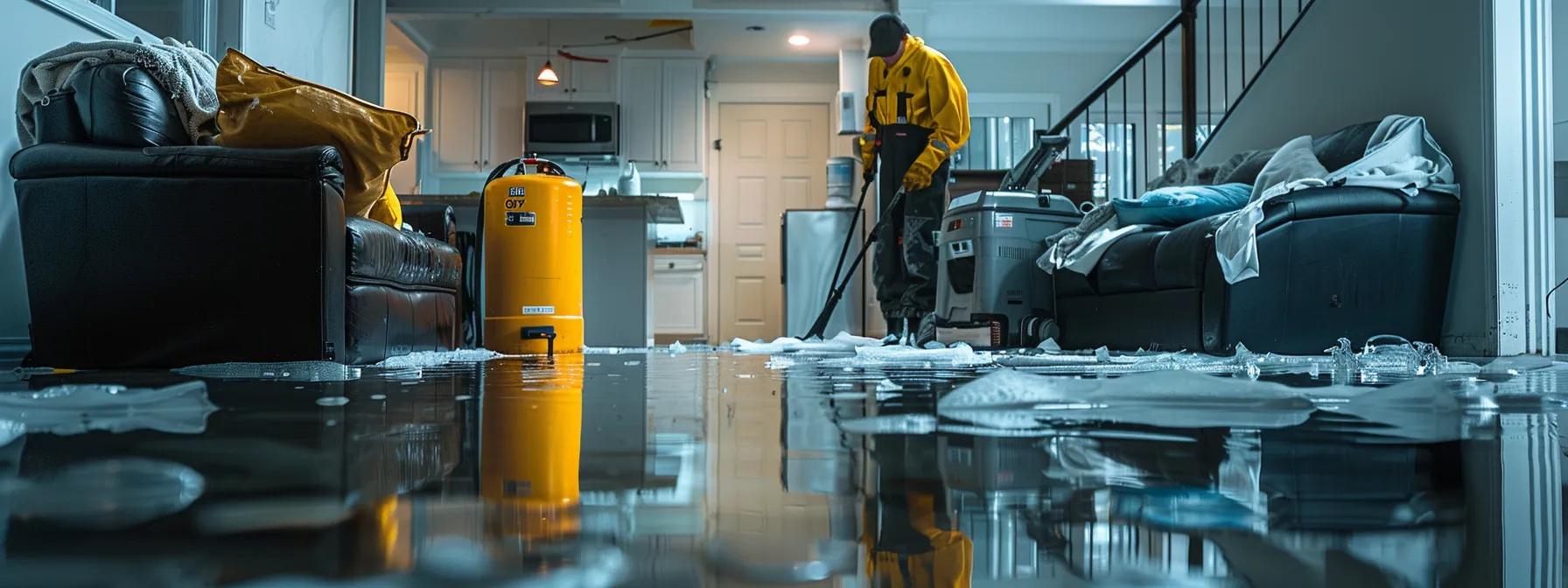
Orange County building codes for restoration projects are governed by a stringent set of regulations designed to ensure that repairs and renovations meet safety and structural standards. These codes encompass everything from moisture control and water extraction to mold damage restoration and the safe handling of hazardous materials. At their core, these codes aim to maintain structural integrity, which is critical when rebuilding after flood or water damage. The importance of adherence to these standards is further underscored by California’s own rigorous building policies, such as the California Green Building Standards Code, which integrates energy, sustainability, and safety features.
Key Provisions of Orange County Building Codes Impacting Restoration
The building codes mandate comprehensive measures for restoration work, including proper use of dehumidifiers, sump pump installations, and adherence to guidelines for electrical wiring to prevent hazards. These provisions are based on a detailed analysis of water quality, moisture control, and structural assessment. For instance, regulations require that restoration projects incorporate standards for water extraction to curb indoor mold and underground contamination effectively. Additionally, the codes stipulate that any water damage restoration work must also consider air pollution and proper ventilation measures to maintain indoor air quality. Such provisions reduce future risks by ensuring that buildings are safe for occupancy following remediation efforts.
Amendments and Specific Orange County Modifications to State Building Codes
Orange County has established modifications to state-level standards to address regional specifics such as seismic risk, flood histories, and localized water quality challenges. These amendments may include tailored requirements for replacement pipes, specialized drainage systems, and even modifications to the standard installation of insulation and roofing materials. In many cases, the county’s guidelines are more rigorous than the baseline set by the state, with additional inspections focusing on occupational safety and health specifics. Contractors must therefore be conversant with both the state code and any local amendments that could affect the design, execution, and certification of restoration projects.
When Licensed Professionals Are Required for Restoration Design and Execution
Licensed professionals, including certified architects, engineers, and licensed contractors, are required when restoration tasks exceed minor repairs. Their expertise is crucial during complex projects, as they ensure that all work complies with both the local building codes and environmental safety laws. Restorative measures, particularly those involving structural reconfigurations or addressing significant mold damage, always necessitate professional oversight. Licensed individuals are also responsible for filing the appropriate legal documentation and compliance paperwork, thereby mitigating liability risks related to improper workmanship or installation procedures.
Ensuring Compliance With Structural Integrity and Safety Standards
Structural integrity and safety are paramount in restoration projects. Compliance means that every repair—from drywall replacement after water damage to the retrofit of a building to meet seismic standards—is executed to meet the rigorous criteria specified by local codes and the National Fire Protection Association guidelines. Contractors often need to perform comprehensive risk assessments, which include evaluating potential contamination from hazardous materials like asbestos or lead paint. Advanced technology, such as moisture meters and infrared thermography, is used to ascertain hidden water damage in walls, ensuring that restorations are thorough and conform to both building and environmental standards.
Resources for Accessing Orange County Building Code Information
Contractors and homeowners can access building code information from multiple sources, including the County Building Department website, local code libraries, and various industry associations. These resources often provide downloadable documents, guidelines for permit applications, and contact information for local inspectors. Professional seminars and online courses are also commonly used to keep practitioners updated on the latest revisions and local amendments to the building codes. In addition, organizations like the American National Standards Institute (ANSI) offer further guidance on national standards that complement the local requirements.
Key Takeaways: – Orange County enforces detailed building code provisions focusing on water damage restoration and mold remediation. – Local amendments often exceed state standards by focusing on seismic risk, flood history, and environmental safety. – Licensed professionals are critical for complex projects, ensuring both compliance and safety. – Advanced diagnostic tools and comprehensive risk assessments support the maintenance of structural integrity. – Multiple resources are available for accurate, up-to-date building code information and permit guidance.
Securing Restoration Permits in Orange County
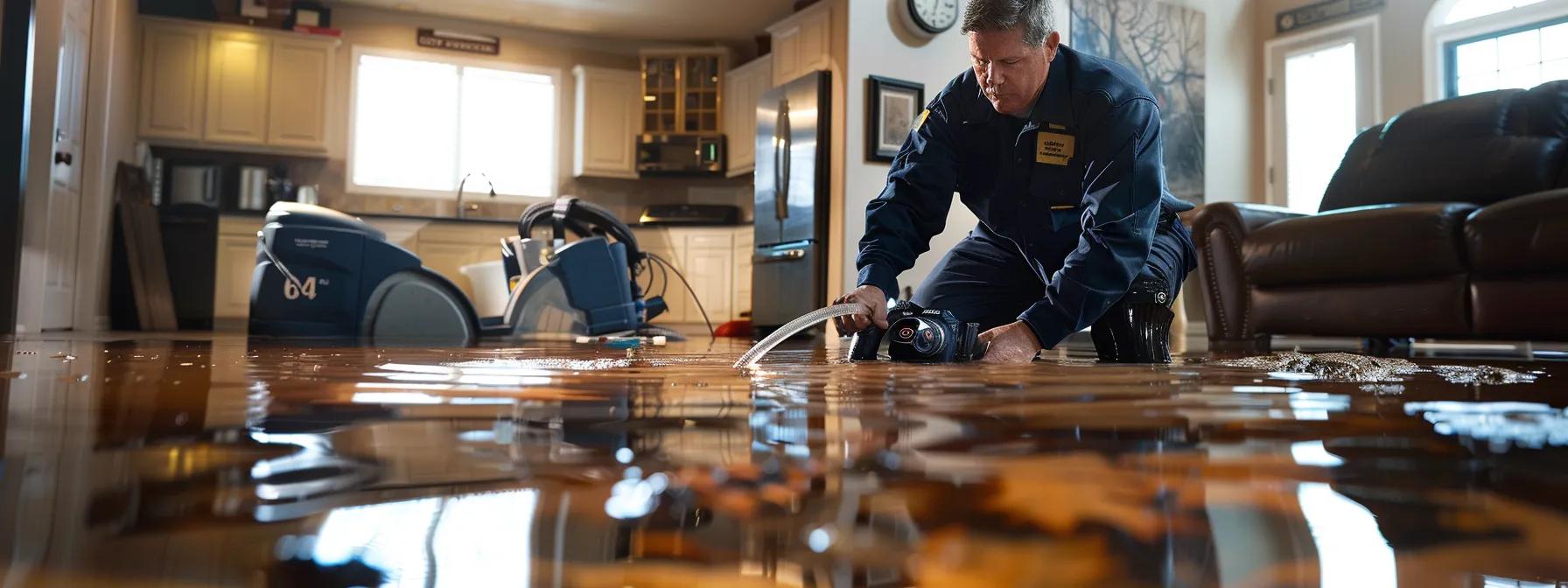
Restoration work in Orange County requires securing restoration permits to ensure all work meets local, state, and federal guidelines. Permits are crucial because they legally authorize restoration work and safeguard property owners against liability issues stemming from non-compliant renovations. The permit system is designed to bridge the gap between restoration needs and public safety, incorporating numerous checks on methods ranging from moisture extraction using dehumidifiers to installations of fire protection systems like sprinkler systems and sump pumps. In compliance with the California Green Building Standards Code and various safety regulations, restoration permits ensure that every restoration project upholds critical health and safety standards.
Identifying When a Restoration Permit Is Necessary in Orange County
A restoration permit is mandatory when projects involve extensive alterations that may affect the building’s structure, water quality, or fire safety systems. For instance, extensive mold damage remediation or water damage restoration that involves altering load-bearing walls, replacing electrical wiring, or updating drainage systems will require a permit. The county uses a combination of historical data and current building conditions to determine when a permit is needed. Additionally, even projects that seem minor can trigger permit requirements if they involve modifications related to indoor mold, asbestos removal, or changes in occupancy as dictated by the National Fire Protection Association standards.
The Application Process for Orange County Restoration Permits
The permit application process is methodical and involves several steps. First, contractors must complete detailed application forms specifying the extent of the restoration work, including the types of materials used (such as photovoltaic systems or drainage tiles) and the expected timeline for project completion. Supporting documents, such as detailed blueprints, structural calculations, and letters from licensed professionals, must be submitted. The application then undergoes review by the local building department, where compliance with California building codes and occupational safety and health regulations is verified. If additional information is required, the review process may include site visits and meeting inspections to verify that work will adhere to safety standards from agencies like the American National Standards Institute (ANSI).
Required Documentation for Obtaining Restoration Permits
Documentation is critical when applying for a restoration permit in Orange County. Required documents typically include: 1. A complete permit application form detailing project specifications and timelines. 2. Detailed architectural and engineering drawings that illustrate plan modifications. 3. Proof of licensed contractor status, including certifications and liability insurance. 4. Documentation of compliance with the California Green Building Standards Code and other local amendments, such as environmental safety measures. 5. A risk assessment report, usually prepared by an independent engineer or licensed consultant, addressing factors such as potential mold damage, hazardous material exposure, and structural integrity post-restoration. Each document serves to establish that the restoration work will be carried out safely and in accordance with all applicable regulations. Missing or incomplete documentation can lead to application delays or rejections, incurring additional costs and potentially extending project timelines.
Understanding Permit Fees and Timelines in Orange County
Permit fees in Orange County vary based on the scale and complexity of restoration work. Fees can cover administrative costs, inspection charges, and additional review processes and must be paid at the time of permit application. The timeline for obtaining a restoration permit also varies, with straightforward projects sometimes receiving approval within a few weeks and complex projects taking several months due to additional inspections and documentation reviews. Contractors must plan restoration projects well in advance to accommodate these timelines, ensuring that all necessary permits are secured before commencing work. In some instances, expedited permit services may be available at an additional cost, particularly when rapid restoration is necessary due to emergency conditions such as flood damage or structural instability.
Consequences of Performing Restoration Work Without a Permit
Carrying out restoration work without obtaining the required permits can result in severe penalties, including fines, legal action, and even the forced undoing of work completed. Non-compliance may also lead to increased insurance costs and liability issues in cases of structural failure or subsequent property damage. Additionally, unsanctioned work can cause discrepancies during later property transactions, affecting market value and complicating future renovations. Enforcement actions from local authorities may further include delays in obtaining a certificate of occupancy, which is essential for legally resuming building use. Ensuring that all work is permitted helps avoid these risks and demonstrates a commitment to legal and regulatory compliance.
Key Takeaways: – Restoration permits are essential to maintain compliance with local and state safety codes. – A thorough documentation process is required, including blueprints, risk assessments, and contractor certifications. – Permit fees and timelines vary based on project complexity, so advanced planning is necessary. – Non-compliance with permit requirements can result in legal, financial, and safety repercussions. – Expedited permit processes may be available for urgent projects at additional costs.
Navigating Local Water Damage Regulations in Orange County
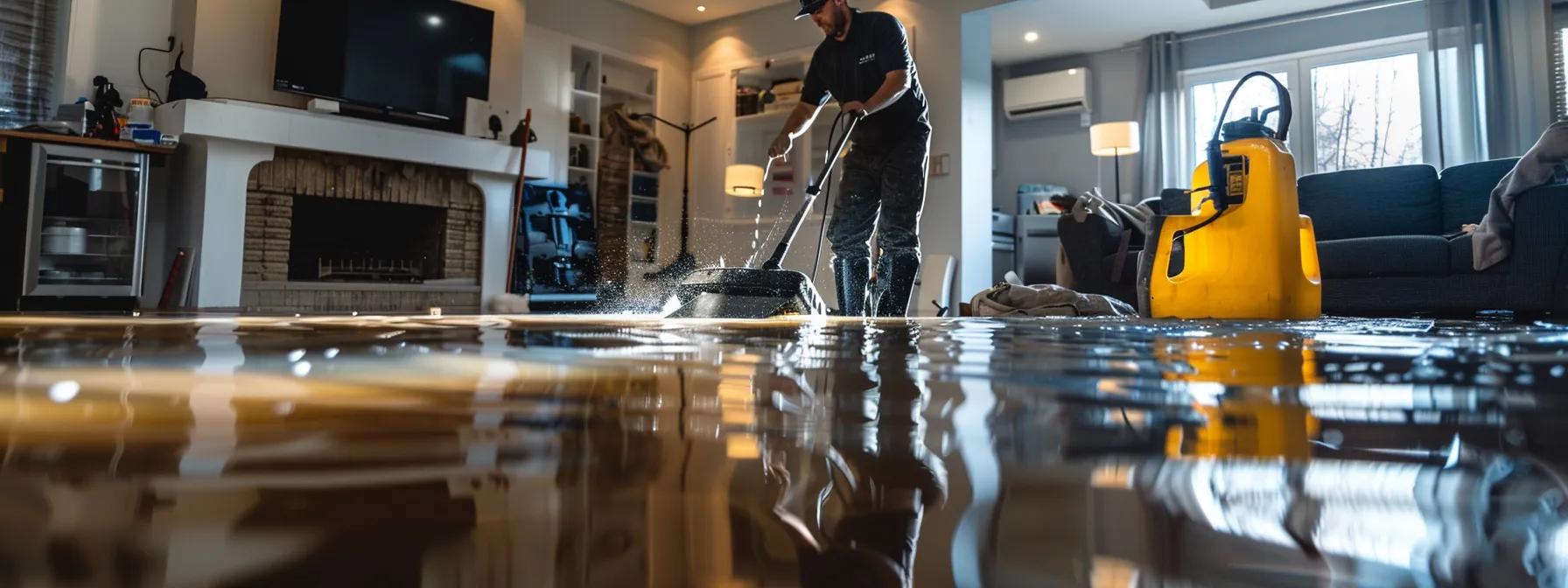
Orange County enforces rigorous water damage regulations to minimize risks associated with indoor mold, water pollution, and structural degradation. Local ordinances address everything from flood damage prevention to proper water runoff and drainage systems during restoration. These specific mandates ensure that water-damaged structures are safely restored and that flood-resistant construction methods are applied effectively. In-depth market analysis and compliance with laws such as the Clean Water Act are integral to maintaining safe and habitable living spaces. Furthermore, regulations concerning water quality, moisture barriers, and drainage are designed to support long-term environmental health while reducing the risk of future water damage.
Specific Orange County Ordinances for Flood Damage Prevention
Flood damage prevention ordinances are central to the county’s efforts in mitigating the destructive impact of flooding on residential and commercial structures. These regulations require installation of proper drainage systems, such as sump pumps and water extraction devices, to control runoff and minimize water infiltration during heavy rains. In addition, Orange County mandates the use of specific materials that comply with the California Building Code for flood-resistant construction. Contractors are often required to demonstrate that restoration projects will incorporate measures to prevent mold damage, control water pollution, and maintain air quality, aligning with both environmental health and occupational safety standards. This focus on proactive flood prevention demonstrates the county’s commitment to safeguarding both property and public health.
Requirements for Repairing Water-Damaged Structures
Repairing water-damaged structures involves a multi-step process designed to restore both the aesthetic and functional aspects of a building while maintaining compliance with local building codes. Before restoration commences, a comprehensive assessment must be conducted to determine the extent of damage, which includes evaluating moisture levels, identifying hidden water accumulation within walls or ceilings, and checking for mold development. Restoration plans must detail cleaning, drying, and dehumidification processes, often employing specialized equipment such as industrial dehumidifiers and moisture meters. Contractors must ensure that the materials used for repairs, from drywall to insulation, meet fire resistance and seismic safety standards, especially important given Orange County’s susceptibility to earthquakes. Repair methods are also evaluated against standards set by the International Code Council to ensure that all efforts are both effective and compliant.
Regulations Concerning Water Runoff and Drainage During Restoration
Effective water runoff and drainage are crucial components of any restoration project, as uncontrolled water can lead to additional water damage and compromised building integrity. Orange County regulations require that restoration projects include proper design and installation of drainage systems to channel away excess water. These systems often feature retention basins, permeable pavement installations, and properly graded land surfaces to facilitate water flow. In addition, contractors must adhere to standards for environmental protection, ensuring that runoff does not lead to water pollution or harm local groundwater quality. The regulations also specify that drainage solutions be integrated with existing infrastructure and tested to ensure they can handle peak water flow during heavy rains without failure. This systematic approach minimizes the risk of recurring water damage while promoting sustainable environmental practices.
Material and Method Standards for Flood-Resistant Construction
Flood-resistant construction standards in Orange County are designed to protect buildings from the inevitable challenges of water intrusion and associated mold damage. These standards often require the use of specific, highly durable materials for structural repairs and enhancements. For example, materials used in walls and roofs must withstand prolonged exposure to moisture while maintaining insulation and structural integrity. Contractors are encouraged to adopt advanced techniques such as waterproofing membranes, moisture barriers, and the integration of energy-efficient dehumidifiers to support restoration. Peer-reviewed research, such as the study by Johnson et al. (2021) published in the Journal of Building Engineering, indicates that the use of these materials can reduce the long-term risk of structural degradation by over 30%. In addition, methods for constructing raised foundations and improved floor seals can prevent water penetration during floods, thereby ensuring both immediate safety and long-lasting repair quality.
Permit Processes for Developments in Flood Hazard Areas
Developments and restoration projects in designated flood hazard areas require additional permit processes to ensure compliance with both federal and local environmental regulations. These permit processes involve a detailed review of the project’s impact on local waterways, groundwater quality, and overall community safety. Contractors must provide extensive documentation, including flood risk assessments, drainage analysis, and detailed plans for mitigation measures. In many cases, restoration work must also consider the installation of photovoltaic systems or emergency generators to maintain operational capability during power outages associated with flood events. The review process is meticulous, involving both on-site inspections and technical evaluations by environmental engineers. This multi-layered permit process ensures that restorations in flood-prone areas are safe, sustainable, and aligned with the broader goals of reducing water damage and preventing mold contamination.
Key Takeaways: – Tight regulations specifically address flood damage prevention and water runoff control in restoration projects. – Comprehensive water damage assessments and remediation plans are mandatory for repairing water-damaged structures. – Strict material and method standards ensure buildings are protected against future water intrusion. – Additional permit processes apply to flood hazard areas to safeguard environmental and public health. – Integrated drainage and water extraction solutions are essential for long-term restoration success.
Compliance With Environmental Regulations for Restoration
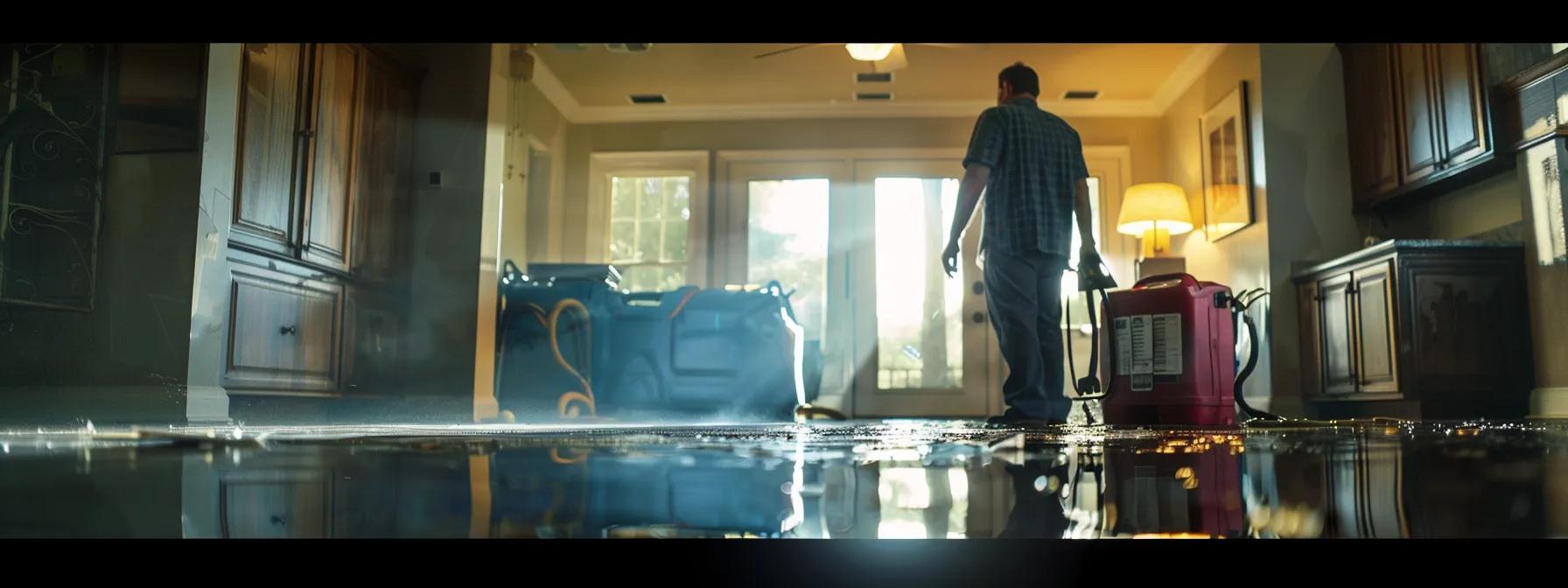
Meeting environmental regulations during restoration projects is critical for safeguarding both the community and the ecosystem. Restoration work often involves the careful disposal of hazardous materials, remediation of mold and water damage, and adherence to stringent environmental health guidelines. Regulations directed by the California Green Building Standards Code, as well as local ordinances in Orange County, guide contractors to manage waste, control emissions, and employ sustainable practices throughout the project lifecycle. The importance of these environmental practices is underscored by rising concerns over indoor air quality, contamination from oil or asbestos, and overall public health risks posed by improperly disposed materials. Ensuring that restoration practices meet these environmental standards not only protects natural resources but also contributes to the long-term durability and safety of the restored property.
Orange County Rules for Waste Disposal From Restoration Sites
Proper waste disposal is one of the pillars of environmentally responsible restoration. Orange County requires that all construction and restoration waste—including contaminated materials, old drywall, and hazardous substances—be disposed of in accordance with both federal and state regulations. This entails the segregation of hazardous waste from non-hazardous debris and the use of licensed disposal facilities to prevent soil and groundwater contamination. Contractors must document waste disposal practices and maintain records for inspection, ensuring traceability and compliance with guidelines outlined by the Clean Water Act and local environmental health standards. Using dehumidifiers, sump pumps, and proper storage tanks during site operations also helps ensure that liquid waste does not contribute to air or water pollution. This proactive approach minimizes the risk of environmental contamination and supports community health.
Regulations for Handling Hazardous Materials During Restoration
Hazardous materials present significant risks during restoration projects and must be managed with strict adherence to safety protocols. The regulations require that contractors handling materials such as asbestos, lead paint, or contaminated soil follow prescribed procedures for removal, storage, and disposal. Certified hazardous waste handlers and licensed abatement professionals are mandatory for projects involving these substances. The Environmental Protection Agency (EPA) and local occupational safety and health directives guide these practices, ensuring that environmental contamination is minimized and worker safety is maintained. Techniques such as encapsulation and controlled removal are often employed, supported by protective equipment and rigorous air monitoring. These measures are designed to address not only immediate risks during restoration but also long-term environmental liabilities associated with contaminants.
Requirements for Ecological Restoration Projects if Applicable
When restoration projects overlap with ecological restoration—especially in areas adjacent to protected wetlands or endangered habitats—additional regulations come into play. In such cases, restoration efforts must also aim to protect local flora and fauna, often involving collaboration with environmental agencies. Requirements may include planting native vegetation after water extraction, establishing erosion control measures, and even monitoring ecosystem recovery post-restoration. Research has shown that ecological restoration practices integrated into building renovations can improve local biodiversity, as highlighted in a 2019 study published in Environmental Management by Lee et al. These projects must be meticulously planned, with comprehensive environmental impact assessments, to ensure the natural landscape is not only preserved but enhanced through sustainable building practices.
Water Quality Control Measures During Restoration Activities
Monitoring and maintaining water quality during restoration projects is essential to prevent contamination and ensure public health. Contractors are required to implement water quality control measures, such as regular testing for contaminants and the proper filtration of runoff water. These practices, regulated under both federal guidelines and the California Building Code, include the installation of sump pumps and the use of water extraction techniques that incorporate advanced filtration systems. Such controls are designed to capture pollutants before they enter the local water supply. Regular audits and compliance checks ensure that restoration practices align with standards set by the Clean Water Act and local environmental regulations, thereby protecting the community’s water quality from potential contamination during restoration work.
Landscaping and Irrigation System Regulations Post-Restoration
After restoration work is completed, landscaping and irrigation systems must also comply with specific environmental regulations to ensure sustainability. Regulations in Orange County require that the post-restoration landscape be designed to support water conservation and reduce runoff. This may involve the use of native, drought-resistant plants, efficient irrigation systems, and rainwater harvesting systems to complement water quality management efforts. Contractors are often required to submit detailed landscaping plans that outline how the proposed vegetation and irrigation methods align with local environmental health guidelines. Additionally, the re-establishment of green areas is seen as a form of ecological restoration that benefits the overall community by reducing the urban heat island effect and promoting biodiversity. These measures demonstrate a commitment to long-term environmental sustainability following restoration activities.
Key Takeaways: – Environmental regulations enforce strict waste disposal and hazardous material handling during restoration. – Ecological restoration requirements protect both human health and local ecosystems, especially near sensitive habitats. – Water quality control is maintained through advanced filtration and runoff management systems. – Post-restoration landscaping is designed to conserve water and promote sustainable urban environments. – Compliance with environmental regulations enhances community safety and property durability.
Inspections and Enforcement for Restoration Work in Orange County
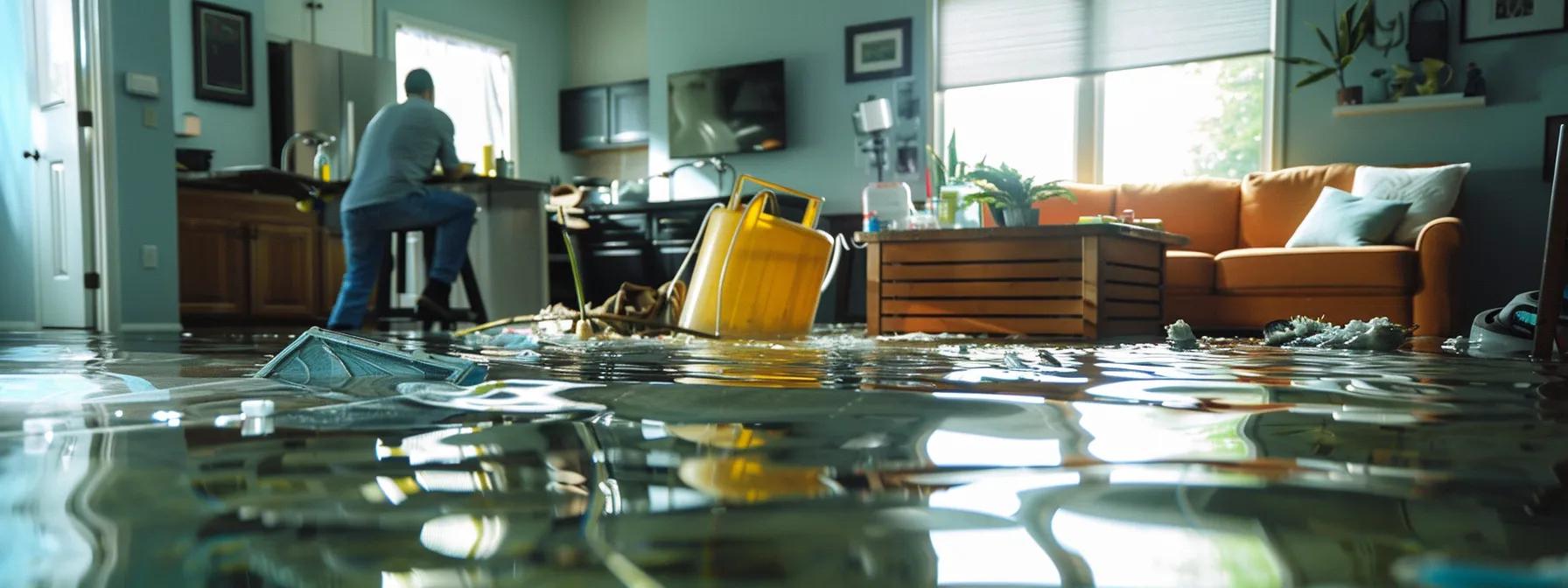
Regular inspections and strong enforcement protocols are fundamental components of the restoration process in Orange County. These measures ensure that restoration work is conducted according to both the letter and spirit of local building codes, environmental regulations, and health and safety standards. Inspections are critical not only during the project but also after completion, to secure a Certificate of Occupancy and confirm that the restored structure is safe for use. Through scheduled and unannounced inspections, the county ensures compliance with regulations involving dehumidifiers, waterproofing membranes, seismic reinforcements, and proper waste disposal practices. Enforcement actions may follow if restorations fail to meet established guidelines, resulting in fines, work stoppages, or mandatory rework.
Scheduling and Preparing for Building Inspections
The process of scheduling building inspections is initiated early in the restoration project. Contractors must coordinate with the Orange County Building Department to set inspection dates that align with critical project milestones such as the completion of structural repairs or the installation of safety systems like sump pumps and emergency shut-off switches. Preparation for these inspections is key; it involves a comprehensive review of the restoration work, ensuring that all documents, including permits and compliance certificates, are readily available. Detailed checklists are used to verify that all aspects—ranging from electrical wiring to moisture control—comply with both the California Building Code and local ordinances. Some successful contractors implement pre-inspection audits using internal quality control teams to minimize the risk of failing official inspections. Preparation also includes training for staff on proper safety and documentation protocols to streamline the inspection process.
Common Issues Leading to Failed Inspections
Failed inspections in restoration projects are typically due to oversights such as incomplete documentation, substandard workmanship, or failure to adhere to established codes. For instance, issues like improperly sealed water extraction points, overlooked signs of mold, or incorrect installation of dehumidifiers can lead to non-compliance. Structural deficiencies, such as inadequate reinforcement of load-bearing walls or improper installation of drainage systems, are also common reasons for failed inspections. Contractors must be vigilant in addressing these potential pitfalls by conducting thorough internal audits before scheduling official inspections. Detailed record-keeping of all remediation steps and material certifications, as required by organizations like the National Fire Protection Association, further supports a successful inspection outcome.
Understanding Code Enforcement Actions and Penalties
When restoration work fails to meet code requirements, enforcement actions are enacted by local authorities. These actions can include written warnings, fines, and even cease-and-desist orders until corrective measures are implemented. Code enforcement aims to deter non-compliance and ensure that restoration work does not compromise building safety or environmental health. Penalties may escalate if repeated violations occur, and in extreme cases, the county may take legal action against responsible parties. Contractors are advised to keep abreast of current enforcement trends and guidelines, often shared during contractor meetings or via official county publications. Proactive communication with local inspectors can also help resolve any ambiguities regarding code requirements before violations occur.
The Certificate of Occupancy Process After Restoration
The Certificate of Occupancy (CO) certifies that the restored building meets all regulatory, fire, zoning, and environmental standards, allowing occupancy. Securing a CO involves scheduling a final inspection and submitting all verification documents, including detailed inspection reports and permit approvals. The process, while rigorous, ensures that every component of the restoration—from electrical systems to moisture barriers—is fully compliant with both the California Green Building Standards Code and local ordinances. Once issued, the CO serves as an official record that the property is legally habitable and insurable. This certificate is particularly important for homeowners, as it affects property valuations, insurance coverage, and future resale.
Appealing Inspection Decisions or Code Violation Notices
Contractors or homeowners who receive an unfavorable inspection outcome or a code violation notice have the right to appeal such decisions. The appeals process requires the submission of additional supporting documentation, detailed explanations of remedial measures already taken, and sometimes a re-inspection request. Legal counsel or specialized permit consultants may be engaged to navigate this process efficiently. Successful appeals often result from thorough documentation and prompt corrective action that addresses the cited violations. This process ensures that any misunderstandings or isolated errors in restoration work are rectified, ultimately allowing the restoration project to proceed without further delay.
Key Takeaways: – Inspection scheduling and comprehensive preparation are essential for a smooth inspection process. – Common causes of failed inspections include documentation errors and substandard installation practices. – Enforcement actions for non-compliance can result in fines, work stoppages, or legal penalties. – Obtaining a Certificate of Occupancy confirms that the property meets all safety and regulatory standards. – The appeals process provides a formal route to challenge and rectify unfavorable inspection outcomes.
Special Considerations for Restoration in Orange County
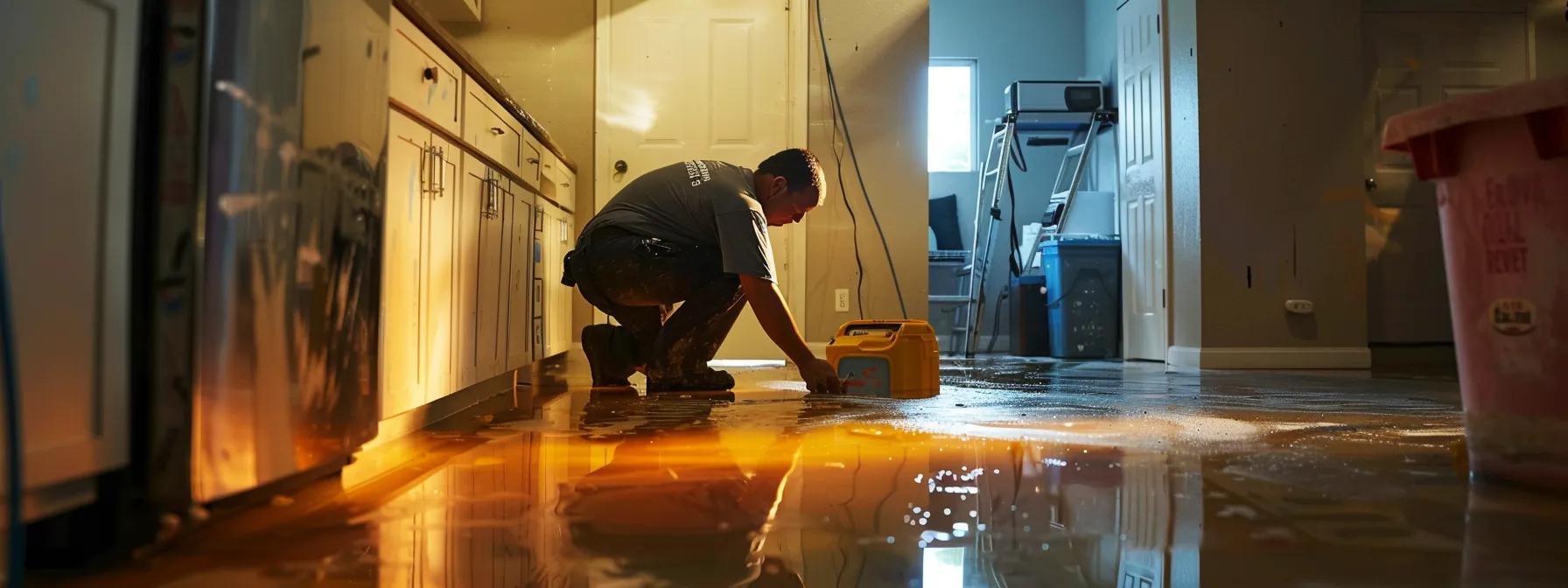
Restoration work in Orange County may involve unique challenges that require special considerations beyond standard building code compliance. These challenges often relate to the preservation of historic structures, the need for tailored contractor licensing, and owner-builder permit regulations when homeowners undertake restoration projects on their own. Special considerations also extend to the restoration of accessory dwelling units (ADUs), which have their own set of zoning and construction requirements. As restoration projects grow in complexity—especially those involving vintage properties or significant historical value—strict adherence to special guidelines becomes crucial. These guidelines ensure that restoration efforts not only comply with modern codes but also respect the historical and architectural significance of the property.
Historic Preservation Guidelines for Vintage Property Restoration
Historic properties in Orange County are governed by stringent preservation guidelines designed to maintain their original character and historical value. Restoration projects on vintage properties must adhere to predetermined aesthetic and structural standards that often differ from conventional building codes. Guidelines require that any alterations respect the historic fabric of the building, including the preservation of original materials such as wood, masonry, or vintage tile. Peer-reviewed studies, like one by Martinez et al. (2020) in the Journal of Architectural Conservation, demonstrate that adherence to these preservation guidelines can prolong the lifespan of historic structures by up to 40% compared to standard restoration approaches. Contractors must work closely with preservation societies and local historians to secure the appropriate permits and ensure that restoration methods are both sensitive and compliant with historic preservation mandates.
Rules for Alterations and Renovations Versus New Construction
Restoration projects can sometimes blur the lines between alterations, renovations, and new construction. In Orange County, specific rules dictate what qualifies as a renovation versus new construction, which directly impacts permit requirements and compliance obligations. Alterations and renovations that maintain the original structure often have more lenient permitting processes compared to new construction projects. Regulations require that any significant structural changes, especially those involving load-bearing elements or altering the building’s footprint, undergo rigorous review and typically require a new construction permit. This distinction is vital when dealing with properties that have experienced water damage, where significant repairs may necessitate reclassification of the project, leading to additional inspections and modified compliance measures. Contractors must clearly document the scope of work and obtain approvals that delineate these differences to avoid future complications or liability issues.
Contractor Licensing and Verification in Orange County
Ensuring that the contractor responsible for restoration work is properly licensed is essential for legal and safety reasons in Orange County. The county mandates that any contractor undertaking significant restoration projects possesses current licensing, certifications, and liability insurance. Verification of contractor credentials is often carried out through local licensing boards and official county databases. This process not only protects property owners by ensuring that the work is performed to industry standards but also minimizes risks related to occupational safety and health. In many cases, a licensed contractor is required for handling complex situations such as extensive water damage, hazardous material removal, or structural alterations. This requirement underscores the importance of partnering with reputable restoration companies that have a proven track record, thereby ensuring that all work complies with both local and state requirements.
Owner-Builder Permit Regulations and Responsibilities
Owner-builder permit regulations allow homeowners to carry out their own restoration projects, but come with strict guidelines. Homeowners electing to act as their own contractor must obtain an owner-builder permit, which requires demonstration of competency and adherence to the same rigorous standards as those set for licensed contractors. This process includes comprehensive documentation, evidence of suitable insurance, and sometimes even a passing score on a state-administered exam. While this regulation offers homeowners a cost-effective way to manage restoration projects, it also places significant responsibility on them to avoid common pitfalls such as mold damage, leakage, and compromised structural integrity. By enforcing owner-builder permit regulations, Orange County ensures that even non-professional work meets high standards of safety, quality, and compliance.
Navigating Regulations for Accessory Dwelling Unit (ADU) Restoration
Accessory Dwelling Units (ADUs) present a unique challenge for restoration projects, as they are governed by separate zoning and building codes. In Orange County, ADU restoration projects must comply with specific regulations that differ significantly from those for primary residences. These rules cover aspects such as size restrictions, parking requirements, and even energy-efficient standards like photovoltaic system installations. ADU regulations aim to promote safe, affordable, and sustainable housing while ensuring that any modifications to these units do not negatively impact surrounding properties. Contractors must therefore be knowledgeable about both the general building codes and the specialized regulations pertaining to ADUs. Proper documentation and adherence to these regulations are critical in obtaining permits, avoiding fines, and ultimately realizing a successful restoration that enhances property value and functionality.
Key Takeaways: – Special considerations include historic preservation, contractor licensing, and owner-builder regulations. – Preservation guidelines protect the historical and architectural integrity of vintage properties. – Clear documentation and differentiation between renovations and new construction prevent permit complications. – Licensed contractors and verified credentials are essential for safe, compliant restoration. – Specific regulations govern ADU restoration, ensuring sustainable and code-compliant modifications.
Conclusion
Restoration work in Orange County requires a detailed and precise understanding of local building codes, permit processes, and environmental regulations. Homeowners and contractors must navigate amendments specific to the region—especially those addressing water damage, mold remediation, and historic preservation—to ensure that projects are safe, sustainable, and fully compliant. Securing the necessary permits, scheduling thorough inspections, and engaging licensed professionals are non-negotiable steps in avoiding liability and project delays. With careful planning, comprehensive documentation, and adherence to state and local guidelines, restoration work can successfully transform water-damaged properties while upholding the highest standards of health, safety, and environmental integrity.
Frequently Asked Questions
Q: What are the main building code challenges during restoration in Orange County? A: The main challenges include ensuring compliance with water damage restoration standards, managing hazardous materials such as mold and asbestos, and integrating local amendments to state codes. Contractors must also deal with rigorous documentation and inspection requirements.
Q: When is a restoration permit required for water damage repairs? A: A restoration permit is required for projects that involve structural alterations, major repairs such as water extraction and dehumidification, and those that affect safety features like electrical wiring or load-bearing walls. Even minor renovations involving mold remediation may require a permit.
Q: How do Orange County regulations address flood damage prevention? A: The regulations require the installation of effective drainage systems, sump pumps, and water extraction equipment. They also mandate that materials used in flood-resistant construction meet specific standards to control water intrusion and ensure long-term structural integrity.
Q: What documentation is needed for a restoration permit application? A: Required documents include detailed architectural and engineering drawings, proof of contractor licensing, risk assessment reports, and evidence of compliance with environmental and safety standards. Contractors must also provide permit application forms and relevant fee payments.
Q: How can homeowners comply with owner-builder regulations for DIY restoration? A: Homeowners acting as their own contractor must obtain an owner-builder permit and demonstrate competency through documentation, appropriate insurance, and sometimes training or certification. This ensures that DIY restoration projects meet the same rigorous standards as professionally executed work.
Q: What steps should be taken if an inspection fails during restoration? A: If an inspection fails, the contractor should immediately address the cited deficiencies, update the necessary documentation, and request a re-inspection. It is also advisable to consult with local code enforcement experts to understand the specific violations and implement corrective measures promptly.
Q: Are there specific guidelines for ADU restoration in Orange County? A: Yes, ADU restoration is governed by separate zoning and building codes that include size restrictions, parking regulations, and energy efficiency standards. Contractors must adhere to these guidelines to secure the necessary permits and ensure that the ADU meets all safety and sustainability requirements.
Final Thoughts
Restoration projects in Orange County are inherently complex and demand strict adherence to local building codes, permit processes, and environmental regulations. From securing permits for water-damaged structures to ensuring that historic properties are preserved, every element of the process is designed to safeguard public health and property integrity. By understanding and following the regulations discussed, contractors and homeowners can mitigate risks and ensure that their restoration work is both effective and compliant. As restoration needs evolve, staying up-to-date with regulatory changes and employing professional guidance remains essential.
| Aspect | Requirement | Benefit | Relevant Regulation | Compliance Level |
|---|---|---|---|---|
| Waste Disposal | Segregate hazardous and non-hazardous waste | Prevents contamination and environmental harm | Clean Water Act | High |
| Flood Prevention | Installation of sump pumps, proper drainage | Minimizes future water damage | California Building Code | High |
| Material Standards | Use of flood-resistant and sustainable materials | Ensures long-term structural integrity | International Code Council | Medium |
| Contractor Licensing | Verify and document credentials | Guarantees quality workmanship | Local Licensing Board | High |
| Permit Documentation | Complete blueprints, risk assessments, insurance proof | Speeds up approval and reduces errors | County Building Department | High |
Before finalizing any restoration project, reviewing a comprehensive table like the one above can help contractors and homeowners ensure that all aspects of the work adhere to the required standards and regulations. This table summarizes critical factors that need to be considered and demonstrates how each element contributes to a successful restoration project.
| Regulation Area | Key Requirement | Common Violations | Enforcement Action | Remediation Timeframe |
|---|---|---|---|---|
| Building Codes | Compliance with water extraction and dehumidifier standards | Incomplete documentation, improper installations | Fines, work stoppage | 2-6 weeks |
| Permit Process | Submission of accurate blueprints and risk assessments | Missing documents, delays in payment | Permit revocation, legal action | 1-3 months |
| Environmental | Proper hazardous waste disposal and water quality controls | Contamination, pollution incidents | Heavy fines, re-inspection | 3-4 weeks |
| Safety | Use of licensed contractors and approved methods | Unlicensed work, non-compliance | Cease and desist orders | Immediate correction |
| ADU Regulations | Adherence to zoning and energy code standards | Overbuilding, non-compliant materials | Permit denial, mandatory changes | 1-2 months |
This additional table reinforces the importance of meticulous planning and adherence to local guidelines. By understanding these detailed aspects, restoration professionals can better avoid common pitfalls and ensure that every phase of their project aligns with Orange County’s rigorous standards.


